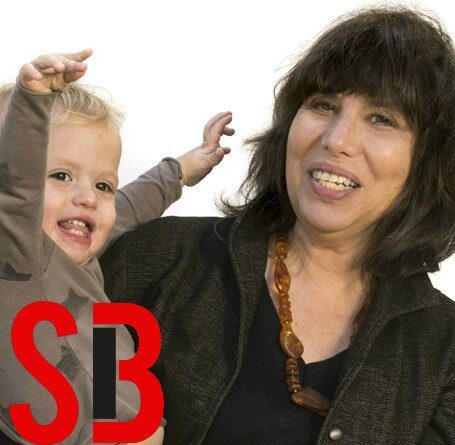Iris Bohnet on Discrimination and Design

LISTEN TO IRIS BOHNET NOW!
While intentional bias generally is an ugly thing, it’s also relatively easy to spot if the will exists to do so. But what about bias where individuals or institutions haven’t set out to discriminate — but the net effect is bias? “[M]uch of discrimination is in fact based on unconscious or implicit bias,” says Iris Bohnet, a behavioral economist at Harvard Kennedy School, “where good people like you and me treat people differently based on their looks.” At times, even the subjects of implicit bias in essence discriminate against themselves.
The Swiss born Bohnet, author of the new book What Works: Gender Equality by Design, studies implicit bias in organizations. In this Social Science Bites podcast, Bohnet tells interviewer David Edmonds that even good-faith efforts to address this bias has so far found little evidence that many of the structural remedies tried so far do in fact have an effect on the underlying bias. This doesn’t mean she opposes them; instead, Bohnet works to design effective and proven solutions that work to “de-bias” the real world.
Bohnet received her Ph.D. in economics from the University of Zurich in 1997 and joined the Harvard Kennedy School in 1998, where she has served as the academic dean of the Kennedy School, is the director of its Women and Public Policy Program, the co-chair (with Max Bazerman) of the Behavioral Insights Group, an associate director of the Harvard Decision Science Laboratory, and the faculty chair of the executive program “Global Leadership and Public Policy for the 21st Century” for the World Economic Forum’s Young Global Leaders. She serves on the boards of directors of Credit Suisse Group and University of Lucerne.
To directly download this podcast, right click HERE and “Save Link As.”
Click HERE to download a PDF transcript of this conversation. The full text also appears below.
Social Science Bites is made in association with SAGE Publishing. For a complete listing of past Social Science Bites podcasts, click HERE.
***
Over the past decade or so there’s been an enormous amount of research into what’s called ‘implicit bias’ – unconscious bias that people hold about others based on, for example, their race or sex. Iris Bohnet is based at Harvard, and is the author of What Works: Gender Equality by Design – a book about how changing the way organizations are set up can reduce bias.
David Edmonds: The topic we’re talking about today is discrimination and design. We’re particularly talking about discrimination against women. There’s lots of evidence of what’s called ‘implicit bias.’ Tell us a bit about that.
Iris Bohnet: Indeed, David, much of discrimination is in fact based on unconscious or implicit bias where good people like you and me treat people differently based on their looks. So, for example, if we see male nurses we are surprised at first because we don’t naturally associate nursing with men. The same is true for female engineers. We don’t naturally associate engineering with women.
David Edmonds: And it’s not intentional; I don’t intend to be biased against women. It’s just something deeply embedded in my psyche and everybody else’s psyche.
Iris Bohnet: That’s exactly right. In fact, when I took our son to a daycare for the first time the first person I saw was a man and I have exactly that reaction. I thought I needed to run and scream. Second, I think nobody is immune from bias and that’s also very liberating in many ways because we’re not pointing fingers at anyone in particular.
David Edmonds: And it’s not just men who are biased against women. Women are biased against women as well?
Iris Bohnet: That’s exactly right. In fact, we are all biased against counter-stereotypical people. So we’re biased against male nurses or we’re biased against female engineers.
David Edmonds: There have been some famous studies done on this. Can you give me some examples?
Iris Bohnet: Absolutely. So for me personally a very important study which in fact motivated me to look more into this topic was a study done in [1997] by Claudia Goldin and Cecilia Rouse. They looked at what major orchestras in the United States had done in the ’70s. It was actually quite an ingenuous design intervention – you mentioned design before – in that they introduced screens and asked musicians to audition behind the screens. It turns out to orchestra directors a huge surprise. This had a big impact on the likelihood that women would advance to future rounds. In fact, it increased the likelihood that women would advance by 50 percentage points. Now, on the major orchestras in the U.S. we have almost 40 percent female musicians while in the ’70s we had between 5 percent and 10 percent.
David Edmonds: So before that, the judges of the musicians were looking at the musicians thinking they were judging just the music but in fact they were being affected by who was in front of them?
Iris Bohnet: That’s exactly right. In fact, we now have the documents supporting what you just described to me – that orchestra directors weren’t particularly excited about the introduction of screens because they thought they didn’t need screens. They thought that they of all people, of course, only cared about the music and not whether somebody looks the part. Now the screens are very powerful demonstrations that that wasn’t in fact the case.
David Edmonds: So that’s one example. Are there any others?
Iris Bohnet: Absolutely. An important example from my own life here at Harvard is a case that we’re teaching our students. It’s a case about Heidi Roizen. Heidi Roizen is a venture capitalist from Silicon Valley. She’s a real person and a colleague of mine, Kathleen McGinn, at the business school wrote a case about how she built her networks in Silicon Valley, how she built her enterprises.
And then some colleagues had the creative idea of changing Heidi’s name to Howard. And what we then did was we gave half of the students the case with the protagonist being called Howard and the other half with the protagonist being called Heidi. The case otherwise was completely identical. They did the same things and students evaluated the case and the protagonists.
And sad enough – this is not particularly good news – both male and female students tend to learn less from a case with a female protagonist and certainly they like Heidi less than Howard.
David Edmonds: So successful women entrepreneurs are either liked or respected but not both?
Iris Bohnet: That is in fact the finding. We sometimes refer to this as the competence-likability dilemma for women and that’s also what Heidi experienced. So Heidi and Howard were, in fact, rated equally in terms of competence. So everyone thought they did a good job but people were less willing to want to hire Heidi or work with Heidi or like Heidi – that’s exactly right.
David Edmonds: There’s an obvious remedy to this. Most big companies now have what they call diversity training and they teach people that these kinds of biases might be present in the recruitment and the promotional process.
Iris Bohnet: That is right and kind of a hard topic for me to address because I applaud, of course, companies’ efforts to want to address bias. But sadly enough to date, there is very little evidence that these diversity training programs actually work. Now when I say this I want to be very careful in doing justice to what we do know and what we don’t know. So that the most important message here is we actually don’t know much at all. So maybe there’s some magic program out there that just hasn’t been evaluated.
But I think the biggest message here for corporations is that in the U.S., estimates are that we now spend about $8 billion per year on diversity training programs really without knowing whether they work or not. The companies should really evaluate what the impact of the program is.
David Edmonds: That is astonishing — $8 billion a year. And no good evidence that it works!
Iris Bohnet: I am astonished as you are. There’s some evidence suggesting that whatever we do might not be working quite as well. A colleague of mine from the Harvard Sociology Department, Frank Dobbin, did a relatively simple exercise. He just looked at correlation between whether or not a company has the diversity training program and how diverse the workforce of the company is. So that’s not telling us anything about cause and effect but just kind of looking at “if you do this, is that somehow related to the diversity of your workforce?” and that correlation is super tiny. So that of course even though it’s not an experiment, a randomized controlled trial that we normally would like to have, certainly doesn’t give us enough confidence that these trainings do a lot of good.
David Edmonds: If diversity training is not the answer, what is?
Iris Bohnet: Companies have been trying out other things short of design changes including leadership training programs, mentorships, sponsorship networks. And again, we don’t have a ton of evidence but the evidence is a bit more encouraging that some of these interventions prove more successful. But I would actually suggest that companies leave the idea of changing our mindsets behind and focus more on changing our institutions.
David Edmonds: Give me an example. What could they do?
Iris Bohnet: When you start with performance appraisals; most companies still believe in performance appraisals and performance appraisals are actually relatively low-hanging fruit to change. What we found in working with companies are two important insights.
The first one is that many companies evaluate their employees based on past performance and future potential. We normally see that gender bias creeps in when potential is taken into account. And it’s actually quite intuitive why this happens. Think back to our discussions of Heidi and Howard. We don’t naturally associate careers and leadership with women and therefore don’t see that women have the potential to climb up the career ladder. That’s the first relatively simple design change that companies could think about. Do away with potential or, if they use potential, at the very least measure whether they have a gender bias issue. That is actually the area where I’m most optimistic about.
Big data is going to completely change human resources management. Big data has, for example, helped Google understand why women were more likely to leave. Google found that they have higher attrition rates among women and then went back to look at who were these women who were actually leaving and they found that these were primarily young mothers. And they immediately increased maternity and paternity leaves.
And the same kind of data can be used to better understand how we rate potential in a person as compared to performance. So a very easy exercise that we do with the companies is look at the performance ratings across employees and then compare how these performance ratings of their employees are correlated to the potential ratings they gave these employees. That’s where we typically find a gender bias. We tend to weight men and women identically in performance but then give men a higher potential rating than women.
David Edmonds: And when managers do ask men and women how they regard themselves, I imagine men are much more self-confident, and that might find its way into another form of bias, because women are downgrading their own potential
Iris Bohnet: Sadly, this is in fact what we’re finding because women tend to be less self‑confident than men they do give them themselves lower ratings than men. A very simple insight from behavioral science in fact has been that whenever we are confronted with numbers, any numbers, also in negotiations – somebody throws an asking price at us, for example – it’s very hard for us to not be affected by these anchors. And so if employees submit their self-evaluations to their supervisors, these numbers serve as anchors for the managers. The managers cannot help but be influenced by these self-evaluations.
David Edmonds: We talked at beginning about blind testing for musicians. What about blind testing for candidates for promotion or appointments. Could you not have standardized tests; presumably there wouldn’t be any bias there?
Iris Bohnet: Absolutely. The way to go really is to move away from unstructured interviews where we just talk to people because, again, that’s a place where bias easily creeps in and when they’re likely to be affected by whether they have the same hobby or like the same football club and move to work sample tests which are more closely resembling what my job is actually going to look like. But to your question of whether we could blind ourselves in other jobs, not just in orchestras as well, I would completely support this idea and there is, in fact, new technology out there which makes it very easy for us to use that software and blind ourselves to demographic characteristics of the applicants.
David Edmonds: Those standardized tests, there’s no way that implicit bias to creep into them?
Iris Bohnet: Well, curious that you would ask me about standardized tests because in fact a former student of mine, Katie Baldiga Coffman, did some really important research on potential gender bias in standardized tests. The most important standardized test in the United States is the SAT. The SAT plays a very important role in determining which college students can go to.
About half of the SAT includes multiple-choice questions. The format of the question is actually not unusual for multiple choice questions. You get a point for every right answer but you also get a small deduction for wrong answers. And of course that means that if you are risk-averse you might not be willing to guess, and if you’re risk-loving, you might be willing to be more likely to guess or overly guess.
Now we do know from lots of research that women, in general, tend to be more risk-averse than men and also less self-confident than men. And that therefore begs the question: are women less willing to guess than men? And that’s exactly what she found in her research that women were more likely to skip questions rather than guessing and controlling for their ability for what they would have known that costs them in fact dearly on the SAT.
David Edmonds: I can one obvious solution to that, which is either to force people to guess, or to remove any penalty from guessing.
Iris Bohnet: So interestingly enough the College Board, which is in charge of the SAT in the United States, went with your second option. They decided to do away with penalties altogether. And that should level the playing field between risk-takers and risk-avoiders or between men and women.
David Edmonds: I want to ask you about one final issue, which people often raise in this area, which is role models. Do role models really make a difference?
Iris Bohnet: Some of the best evidence in role models in fact comes out of India. India amended its constitution in 1993 with the provision that a third of village heads have to be female. The beauty of the experiment was it was an experiment and that the third was picked randomly out of the hat. So researchers could follow this experiment and see how villages with female heads did compared to villages with male mayors, so to speak.
So what researchers uncovered since the introduction of the quotas was that if a village was exposed to at least two female heads in that time, stereotypes started to change and people started to associate political leadership with women. In fact, the happy ending of the story is the recent paper in Science which shows that one of the core career aspirations of parents is for their daughters to become politicians.
David Edmonds: I’m in your office here in Harvard, and I notice all around me are pictures of women, and actually I haven’t seen a picture of a man. Is that deliberate?
Iris Bohnet: That is actually a very new development. About 11 years ago, a colleague of mine, a professor here at the Kennedy School, Jane Mansbridge, realized that of all the portraits in our walls, exactly zero were of women. So we have been in a bit of a mission in the last 12 years to add more portraits to our walls to give our 50 percent female students role models who look like them.
David Edmonds: I’m a bit skeptical that that makes any difference at all. Is there any evidence that it does?
Iris Bohnet: There is in fact interesting psychological evidence showing that in computer science classrooms women do better when they are surrounded by images which look more like them as compared to images which are associated with men. There’s also evidence suggesting that if you just show girls and boys, male or female role models, say Hillary Clinton or Maggie Thatcher or Bill Clinton or Tony Blair for example, that will affect the kind of speeches they give as evaluated by external observers. If girls see a female role model, they will be giving speeches which are more self-confident and weighted as more powerful.
David Edmonds: It’s fascinating stuff. What interests me about your work is that you actually come up with concrete ideas about employers can change the workplace and make a difference. It’s a very prescriptive approach.
Iris Bohnet: In fact I think we have to do both. We have to describe and we have to prescribe. Any good prescription starts with description. I mean first we have to understand the problem before we fix it. That’s why I’m so excited about big data and machine learning and other approaches which help us understand what is really going on. But I would like to invite more of my social science colleagues to join us in thinking more about: so how can we fix the problems that we have diagnosed beforehand? And as a behavioral scientist, I strongly believe that we now do have the insights and the tools to help us promote behavior change, not by changing mindsets but changing organizations.






























































































